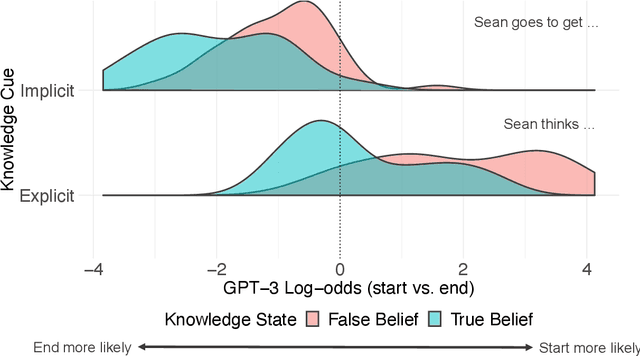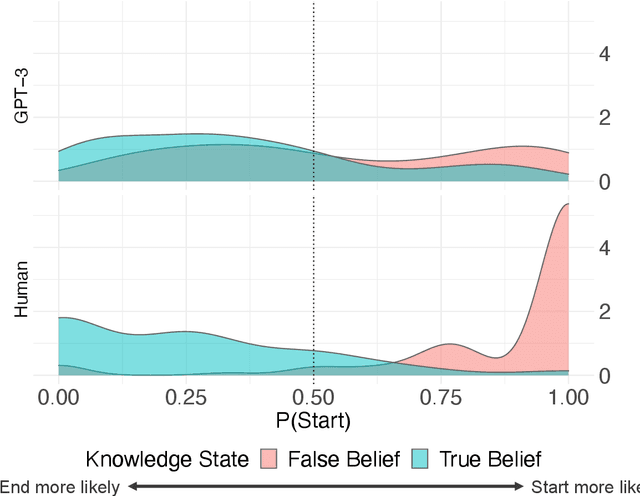Cameron Jones
Does GPT-4 Pass the Turing Test?
Oct 31, 2023Abstract:We evaluated GPT-4 in a public online Turing Test. The best-performing GPT-4 prompt passed in 41% of games, outperforming baselines set by ELIZA (27%) and GPT-3.5 (14%), but falling short of chance and the baseline set by human participants (63%). Participants' decisions were based mainly on linguistic style (35%) and socio-emotional traits (27%), supporting the idea that intelligence is not sufficient to pass the Turing Test. Participants' demographics, including education and familiarity with LLMs, did not predict detection rate, suggesting that even those who understand systems deeply and interact with them frequently may be susceptible to deception. Despite known limitations as a test of intelligence, we argue that the Turing Test continues to be relevant as an assessment of naturalistic communication and deception. AI models with the ability to masquerade as humans could have widespread societal consequences, and we analyse the effectiveness of different strategies and criteria for judging humanlikeness.
Do Large Language Models know what humans know?
Sep 04, 2022

Abstract:Humans can attribute mental states to others, a capacity known as Theory of Mind. However, it is unknown to what extent this ability results from an innate biological endowment or from experience accrued through child development, particularly exposure to language describing others' mental states. We test the viability of the language exposure hypothesis by assessing whether models exposed to large quantities of human language develop evidence of Theory of Mind. In a pre-registered analysis, we present a linguistic version of the False Belief Task, widely used to assess Theory of Mind, to both human participants and a state-of-the-art Large Language Model, GPT-3. Both are sensitive to others' beliefs, but the language model does not perform as well as the humans, nor does it explain the full extent of their behavior, despite being exposed to more language than a human would in a lifetime. This suggests that while language exposure may in part explain how humans develop Theory of Mind, other mechanisms are also responsible.
 Add to Chrome
Add to Chrome Add to Firefox
Add to Firefox Add to Edge
Add to Edge